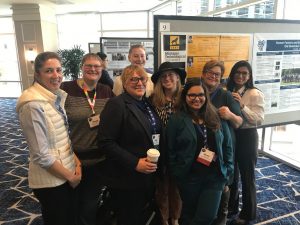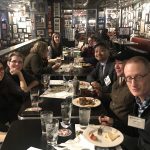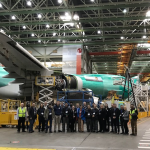
The Department of Cognitive and Learning Sciences supported the travel of 9 faculty and students to attend this year’s Human Factors and Ergonomics Society Conference in Seattle October 28 – November 1, 2019.
We are beyond proud of this group of fine people, and ESPECIALLY love that we are not the “typical” faces of scientists in this field, or at Michigan Tech.
Six Tech undergraduate and graduate students attended and met folks from a variety of government and industry research labs, presented the ACSHF department poster, and all around enjoyed Seattle.
Dr. Elizabeth Veinott organized a panel on Training and Transfer: Exploring issues of embedded training in complex systems with industry and Coast Guard partners. As systems become smarter, development cycles are accelerated, and operational requirements are more dynamic, new ET models, methods, and evaluation strategies are needed. Dr. Veinott talked about her research developing embedded decision training for different operational teams. Kaitlyn Roose, one of her PhD students, also attended HFES before heading off to have Esport discussions at BlizzCon.
Dr. Samantha Smith served as co-chair of a session on the use of physiological measures in cognitive engineering and decision making and also presented a research lecture on the relationship between cerebral hemodynamics and sustained attention. In addition to the keynote presentations, Dr. Smith particularly enjoyed attending discussion panels centered around systems and strategies for promoting human factors teaching and learning, and strategies for enhancing equality in the field of human factors and ergonomics.
Dr. Kelly Steelman served as the chair of a session on Perception and Safety on the Roads. As a 2019 HFES Science Policy Fellow, she also attended trainings with the HFES Government Relations Committee and Lewis-Burke Associates to learn more about government affairs and opportunities to impact the policy process. A highlight of the trip was attending a VIP tour of the Boeing Everett Factory to see the many aspects of human factors in aircraft manufacturing and workplace safety.




